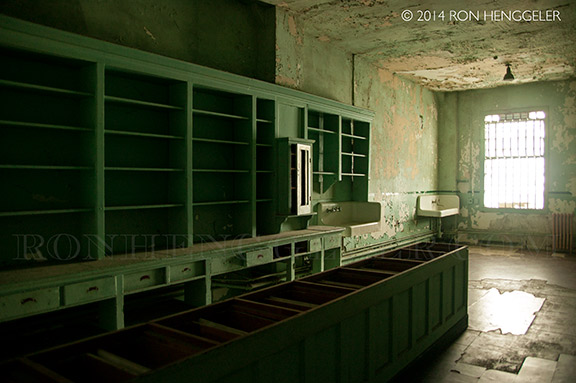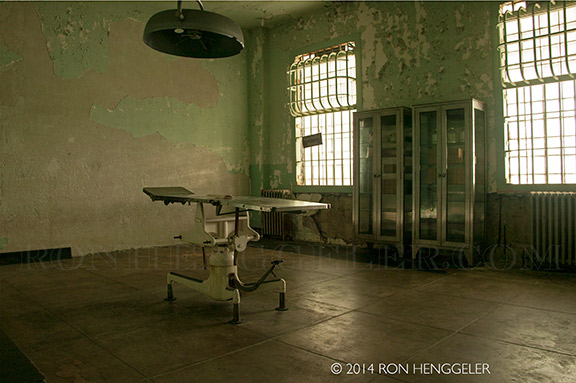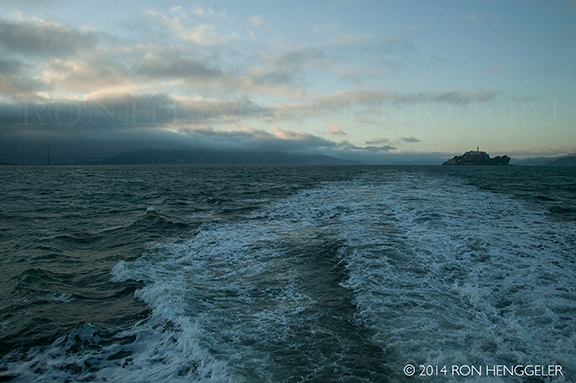RON HENGGELER |
November 14, 2014
@ Large: Ai Weiwei on Alcatraz
Last Monday, November 10th, Dave and I went to Alcatraz Island to see @Large: Ai Weiwei on Alcatraz.
@Large: Ai Weiwei on Alcatraz features a series of seven site-specific installations by artist Ai Weiwei in four locations on Alcatraz Island.
The show offers a new cultural lens through which to experience the notorious military and federal penitentiary turned national park.
Here are a few of my photos from last Monday’s visit to Alcatraz.
The silhouette of San Francisco’s Financial District seen from the Cruise Ship Terminal along the Embarcadero. |
Texture and shadows along the waterfront. |
The Transamerica Pyramid espied from the Alcatraz Cruises loading dock. |
Onboard the ship waiting to be taken over to Alcatraz Island. |
Aboard ship, and waiting to depart to Alcatraz |
On the way to Alcatraz, a view of the new Bay Bridge, with the old span behind it being deconstructed |
Each year more than one million tourists flock to Alcatraz for its torrid history which began as a 19th century military fortress before being converted to a military prison then the country's most notorious federal penitentiary, which operated from 1933 to 1963. |
The United States' most storied island prison, Alcatraz, is a fitting home for artist and activist Ai Weiwei's latest project, @Large. Still confined to his home country of China, Ai's presence at the former federal penitentiary is ironic, if not fitting for this monumental exhibition, which is a commentary on freedom of expression and human rights. Ai worked closely with the FOR-SITE Foundation from his studio in Beijing, creating the site-specific installation in a location he could not visit, with Executive Director Cheryl Haines acting as Ai's eyes and ears in San Francisco. |
Even with the prison closed, the island's tumultuous history continued when in 1969 Native Americans from San Francisco occupied the island as part of a wave of Native American activism and protest for 19 months. Elements and evidence from each layer of the island's history remain visible, reminding each visitor of the extreme limitations of freedom that the island represented for so many years. |
Inspired by the prison's past, and by his own detention by the Chinese authorities in 2011, Ai created a series of installations that encompass sculpture, sound and mixed media, which create a direct dialogue with the sterile prison environment that shows the wear and tear of years of abandonment. The exhibition occupies three buildings on the campus which are normally restricted from the public; the New Industries Building, Cell Block A, and the Hospital, which also houses the prisoner Dining Hall, generally open to the public and taken over by Ai for the exhibition. |
|
The Workshop on Alcatraz |
|
A glimpsed view through the window of the Workshop |
Historically, the New Industries Building provided a bit of a respite from prison life, giving prisoners a space to break boredom and make a little money in the prison labor complex. In the cavernous building, visitors are confronted with Ai's first piece, With Wind, a boldly colorful traditional Chinese dragon kite that snakes throughout the room's concrete columns. |
Each panel of the silk and paper dragon was hand painted by Chinese artisans, another of Ai's attempts to revive a fading cultural art. Aside from traditional patterns and colors, Ai has also quoted a list of proponents of free speech on the panels, such as human rights lawyer Le Quoc Quan and ex-NSA contractor Edward Snowden. The winding kite, meant to catch wind outdoors, has been confined to the crumbling walls of the prison, creating parallels between freedom and restriction. |
|
|
|
Eighty local San Francisco volunteers were enlisted to help put together Trace, an installation of 176 portraits of international activists imprisoned or exiled because of their beliefs or affiliations, made from hundreds of thousands of LEGO bricks. |
Sprawling across the ocean-facing floor of the New Industries Building, the tiny LEGOs make up the intricate faces, many of whom were still incarcerated for their beliefs as of June of 2014. The bright colors of the pixilated portraits are contrasted against the peeling paint of the room, with each literally linked together by the mass of LEGOs, creating a relationship between the individual and the collective. |
Prominent Iranian journalist Bahman Ahmadi Amouee, a prisoner of conscience who has spent almost two years in Evin Prison. |
|
Veteran Chinese activist Zhu Yufu has been jailed for seven years after being accused of “subversion of state power” by writing a poem. By Zhu Yufu, translated by A. E. Clark and reprinted with permission It’s time, people of China! It’s time. It’s time, people of China! It’s time. It’s time, people of China! It’s time. . |
Refraction occupies the lower level of the building, known as the gun gallery, where armed guards once hovered over prison workers. |
The wing stretches out as if attempting flight, its edges constricted by the gallery floor and ceiling. |
The massive sculpture stretches like a silver wing across the expansive floor, its feathers made up of silver panels taken from solar cookers used in remote locations in Tibet, an area under the thumb of Chinese rule. |
|
A glimpsed view through a dirty window of the historic Alcatraz Water Tower |
Alcatraz Island is located in the San Francisco Bay, 1.5 miles offshore from San Francisco, California. |
It is home to the abandoned prison, the site of the oldest operating lighthouse on the West Coast of the United States, early military fortifications, and natural features such as rock pools and a seabird colony (mostly Western Gulls, cormorants, and egrets). According to a 1971 documentary on the History of Alcatraz, the island measures 1,675 feet by 590 feet and is 135 feet at highest point during mean tide. |
Native Americans kept away from the island, calling it "Evil Island" and believing it to be cursed. The first Spaniard to document the island was Juan Manuel de Ayala in 1775, who charted San Francisco Bay and named one of the three islands he identified as the "La Isla de los Alcatraces," which translates as "The Island of the Pelicans, from the archaic Spanish alcatraz (in English: "pelican"), a loan word from Albatross. |
Over the years, the English version "Alcatraz" became popular and is now widely used. In August 1827, French Captain Auguste Bernard Duhaut-Cilly wrote "...running past Alcatraze's (Pelicans) Island...covered with a countless number of these birds. A gun fired over the feathered legions caused them to fly up in a great cloud and with a noise like a hurricane." The California Brown Pelican is not known to nest on the island today. The Spanish put a few small buildings on the island, little else. |
Because the penitentiary cost much more to operate than other prisons (nearly $10 per prisoner per day, as opposed to $3 per prisoner per day at Atlanta), and half a century of salt water saturation had severely eroded the buildings, then Attorney General Robert F. Kennedy ordered the penitentiary closed on March 21, 1963. In addition, citizens were increasingly protesting the environmental effects of sewage released into San Francisco Bay from the approximately 250 inmates and 60 Bureau of Prisons families on the island. |
Beginning on November 20, 1969, a group of Native Americans called United Indians of All Tribes, mostly college students from San Francisco, occupied the island to protest federal policies related to American Indians. Some of them were children of Indians who had resettled in the city as part of an urbanization program encouraged by the Bureau of Indian Affairs (BIA) from the 1930s to the 1950s. The BIA hoped to give Indians new opportunities in the cities, as many Indian reservations were isolated from job markets. A number of employees of the Bureau of Indian Affairs also occupied Alcatraz at that time, including Doris Purdy, an amateur photographer, who later produced footage of her stay on the island. |
The occupiers, who stayed on the island for nearly two years, demanded the island's facilities be adapted and new structures built for an Indian education center, ecology center and cultural center. The American Indians claimed the island by provisions of the Treaty of Fort Laramie (1868) between the U.S. and the Sioux; they said the treaty promised to return all retired, abandoned or out-of-use federal lands to the Native peoples from whom it was acquired. (Note: The Treaty of 1868 stated that all abandoned or unused federal land adjacent to the Great Sioux Reservation could be reclaimed by descendants of the Sioux Nation.) Indians of All Tribes then claimed Alcatraz Island by the "Right of Discovery", as indigenous peoples knew it thousands of years before any Europeans had come to North America. |
The Native Americans demanded reparation for the many treaties broken by the US government and for the lands which were taken from so many tribes. In discussing the Right of Discovery, the historian Troy R. Johnson states in The Occupation of Alcatraz Island, that indigenous peoples knew about Alcatraz at least 10,000 years before any European knew about any part of North America. |
During the nineteen months and nine days of occupation by the American Indians, several buildings at Alcatraz were damaged or destroyed by fire, including the recreation hall, the Coast Guard quarters and the warden's home. The origin of the fires is disputed. The U.S. government demolished a number of other buildings (mostly apartments) after the occupation had ended. Graffiti from the period of Native American occupation are still visible at many locations on the island. |
During the occupation, President Richard Nixon rescinded the Indian termination policy, designed by earlier administrations to end federal recognition of tribes and their special relationship with the US government. He established a new policy of self-determination, in part as a result of the publicity and awareness created by the occupation. The occupation ended on June 11, 1971. In 2011 a permanent multimedia exhibit was opened on Alcatraz examining the 19-month occupation. Located in the former band practice room in a cellblock in the basement, the space serves as the cultural center the Native American occupiers requested upon their occupation. The exhibit, called "We Are Still Here," features photos, videos and sound recordings gathered by staff and students at San Francisco State University and California State University, East Bay. |
The United States Disciplinary Barracks on Alcatraz was acquired by the United States Department of Justice on October 12, 1933, and the island became a Federal Bureau of Prisons federal prison in August 1934. Alcatraz was designed to hold prisoners who continuously caused trouble at other federal prisons. |
At 9:40 am in the morning of August 11, 1934, the first batch of 137 prisoners arrived at Alcatraz, arriving by railroad from the United States Penitentiary in Leavenworth, Kansas at Santa Venetia, California, before being escorted to Alcatraz, handcuffed in high security coaches and guarded by some 60 special FBI agents, U.S. Marshals and railway security officials. |
During the 29 years it was in use, the jail held some of the most notorious criminals in American history, such as Al Capone, Robert Franklin Stroud (the Birdman of Alcatraz), George "Machine Gun" Kelly, Bumpy Johnson, Rafael Cancel Miranda (a member of the Puerto Rican Nationalist Party who attacked the United States Capitol building in 1954), Mickey Cohen, Arthur R. "Doc" Barker, James "Whitey" Bulger, and Alvin "Creepy" Karpis (who served more time at Alcatraz than any other inmate). |
During its 29 years of operation, the penitentiary claimed that no prisoner successfully escaped. A total of 36 prisoners made 14 escape attempts, two men trying twice; 23 were caught, six were shot and killed during their escape, two drowned, and five are listed as "missing and presumed drowned". The most violent occurred on May 2, 1946, when a failed escape attempt by six prisoners led to the Battle of Alcatraz. |
Inside the Cellhouse |
A fully functioning hospital existed on Alcatraz throughout the military and federal prison years. Instead of sending sick or injured inmates to San Francisco where they might have a chance to escape, Alcatraz administrators brought the doctors to the prisoners. The Cellhouse Hospital is normally closed to the public but it has been opened for the first time as part of the @Large: Ai Weiwei on Alcatraz Exhibition. |
Medical care was one of only four basic rights granted to prisoners at the Alcatraz penitentiary. Inmates exercised their right at sick call: every day after lunch, prisoners could line up to ask to be taken to the Hospital upstairs from the Dining Hall. One former officer claimed that as many as 10 percent of inmates would appear in the sick line on a given day, either suffering from genuine illness or hoping for an escape from regular life in the cellblock. |
Each ward cell in the Hospital could hold as many as six men, but inmates were usually kept separate for safety reasons. Among the prisoners who spent time in these cells were Al Capone, confined to the Hospital in 1938 after being diagnosed with syphilis; and Robert “Birdman” Stroud, who lived in the infirmary for 11 years. A hypochondriac as well as an extremely disruptive inmate who had incited a riot in D Block, Stroud was permanently moved to the Hospital in 1948 to keep him out of the general population. |
The Hospital was staffed by a general practitioner who lived on the island, while specialists, surgeons, and psychiatrists from the San Francisco Public Health Service and the Presidio military base visited when needed. Female nurses or assistants sometimes accompanied the surgeons — the only time women were ever allowed inside the Cellhouse. A doctor who worked on Alcatraz described the inmates falling totally silent — whether out of respect or sheer astonishment — at the sight of a female anesthetist walking the length of the Cellhouse to the Hospital. |
A Bureau of Prisons bulletin boasted: “The Alcatraz Hospital, adjacent to the main cell house, is equipped with modern X-ray and physical therapy apparatus, operating theater, laboratories, and dental unit, and contains wards and individual rooms for the treatment and convalescence of inmate patients. It has been certified by the American College of Surgeons and compares favorably with the up-to-date hospitals and clinics in the free community.” |
The Morgue on Alcatraz |
|
|
Newsletters Index: 2015, 2014, 2013, 2012, 2011, 2010, 2009, 2008, 2007, 2006
Photography Index | Graphics Index | History Index
Home | Gallery | About Me | Links | Contact
© 2015 All rights reserved
The images are not in the public domain. They are the sole property of the
artist and may not be reproduced on the Internet, sold, altered, enhanced,
modified by artificial, digital or computer imaging or in any other form
without the express written permission of the artist. Non-watermarked copies of photographs on this site can be purchased by contacting Ron.



















































